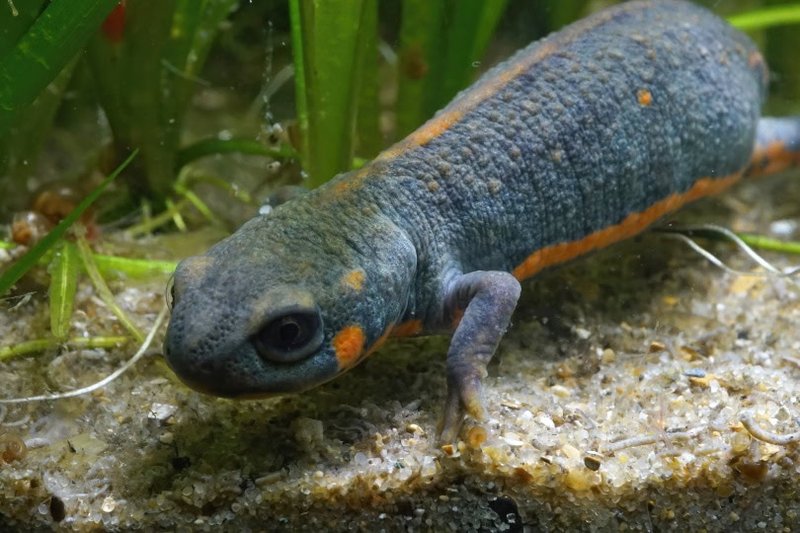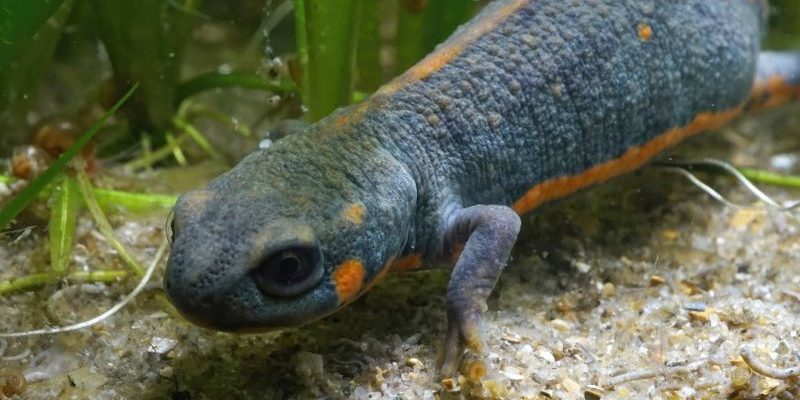
So, what exactly does a newt eat, and how does it hunt for its meals? Picture this: a newt stealthily moving through shallow water or damp leaves, eyes sharp and ready to pounce on its next meal. It’s a bit like an underwater ninja, blending into its environment while keeping a lookout for unsuspecting prey. Let’s dive into the world of newts, exploring their diet, hunting techniques, and the habitats they thrive in.
Understanding the Newt’s Diet
Newts are primarily carnivorous, which means they love to munch on meat. Their diet mainly consists of small invertebrates, which can range from insects to worms and even tiny snails. You might be surprised to learn that newts can also eat algae and plant matter, especially during their larval stage. This aspect of their diet is important for their growth and development.
Here’s a more detailed look at what newts typically eat:
- Insects: Newts feast on a variety of insects like flies, beetles, and mayflies. These critters are easy to capture and provide a good source of protein.
- Worms: Earthworms are a staple in a newt’s diet. They’re soft-bodied and easy for newts to digest.
- Crustaceans: Small aquatic crustaceans, such as water fleas, also make up part of their meals. These provide additional nutrients for growing newts.
You might wonder how these small creatures can catch such quick-moving prey. The answer lies in their unique hunting techniques.
How Newts Hunt: The Ambush Strategy
Newts are masters of stealth. Instead of chasing after their food, they prefer to rely on a strategy known as ambush hunting. This technique involves waiting patiently in their environment until prey wanders too close. It’s a bit like playing hide-and-seek in nature.
When a newt spots a potential meal, it uses its excellent vision and a quick flick of its tail to propel itself toward the prey. Their agile movements allow them to surprise unsuspecting insects or small animals, making the capture seem effortless. Just imagine a newt crouched among the leaves, its sharp eyes trained on a wandering ant—waiting for the perfect moment to strike!
The Role of the Tongue in Hunting
Let’s talk about one of the most fascinating features of newts: their tongue. Newts have a long, sticky tongue that they use like a superhero’s secret weapon. When prey is within range, the newt will flick out its tongue at lightning speed, snagging the unsuspecting insect right off the ground or from underwater.
This ability to catch prey quickly is crucial for survival. The longer a prey item is allowed to escape, the more likely it is to get away. Think of it as a newt’s way of ensuring its next meal is never more than a flick of the tongue away.
Feeding Habits in Different Life Stages
Newts undergo a fascinating metamorphosis, transitioning from larvae to adult forms. Their diet changes significantly at each stage.
As larvae, newts are more herbivorous, feeding on algae and tiny particles in the water. They need these nutrients for growth and development. As they mature into adults, their diet shifts to a more carnivorous one, as we discussed earlier.
The changes in their diet are essential because they match their growing needs and the availability of food sources in their environment. It’s almost like their diet is tailored to each stage of their life, allowing them to thrive no matter what.
Newt Hunting Techniques in Various Environments
Habitat plays a significant role in how newts hunt and what they eat. Newts can be found in diverse environments, from ponds to forests. Each setting offers different food sources and hunting opportunities.
For instance, newts living in ponds often have easy access to a variety of insects and other aquatic organisms. Here, they can blend in among the reeds and wait for their prey to swim by. On the other hand, newts in forest environments might rely more on terrestrial insects and worms, making their hunt a bit different.
Understanding how newts adapt their hunting strategies to different habitats is crucial for their survival. This adaptability allows them to find food efficiently, no matter where they are.
Competition and Predators
While newts are skilled hunters, they’re also part of a larger food chain. Other predators, including birds, snakes, and larger fish, see newts as a tasty snack. Competition for food can be fierce, particularly in areas with multiple species vying for similar prey.
This competition often influences a newt’s hunting strategy and diet. They need to be quick and clever to avoid becoming someone else’s meal while also ensuring they get enough to eat. The balance of predator and prey is delicate, and newts play a crucial role in maintaining that balance in their ecosystems.
The Importance of Newts in Ecosystems
You might be wondering why all this matters. Newts play a vital role in their environments, controlling insect populations and acting as both prey and predator. Their hunting habits help maintain the balance of ecosystems, ensuring that no single species dominates.
Additionally, newts can be indicators of environmental health. Changes in their population can signal shifts in ecosystem balance or the impact of pollution. So, when you see a newt, remember that it’s not just a cute little critter; it’s a sign of a healthy environment.
In conclusion, newts are fascinating hunters with intricate diets that change throughout their lives. They rely on stealth, quick reflexes, and adaptability to thrive in various habitats. By understanding what newts eat and how they hunt, we gain a greater appreciation for these remarkable creatures and their critical roles in nature. So next time you spot a newt, take a moment to admire the skill and cunning that goes into its survival!

